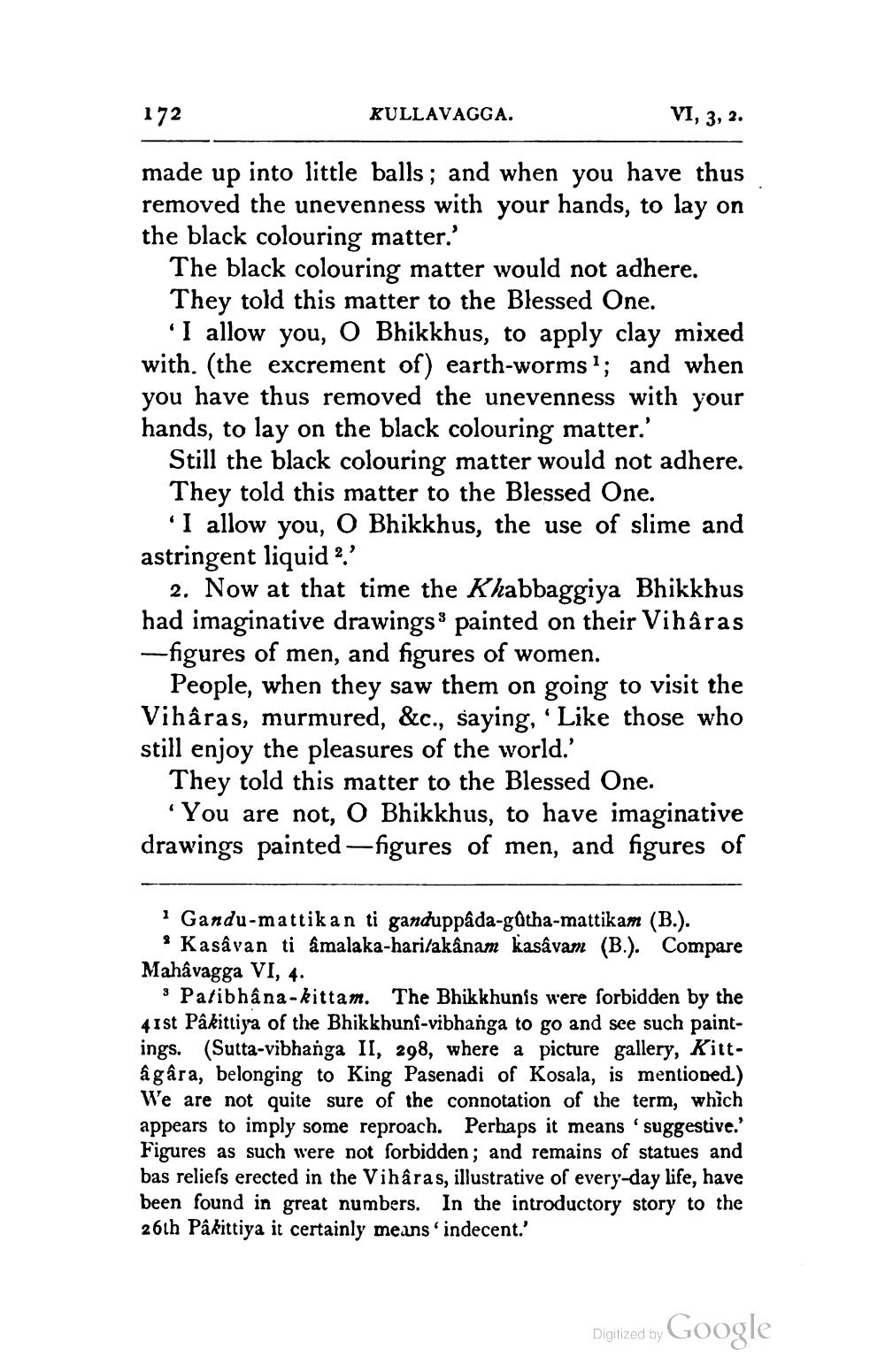________________
172
KULLAVAGGA.
VI, 3, 2.
made up into little balls; and when you have thus removed the unevenness with your hands, to lay on the black colouring matter.'
The black colouring matter would not adhere. They told this matter to the Blessed One. 'I allow you, O Bhikkhus, to apply clay mixed with. (the excrement of) earth-worms?; and when you have thus removed the unevenness with your hands, to lay on the black colouring matter.'
Still the black colouring matter would not adhere. They told this matter to the Blessed One.
'I allow you, O Bhikkhus, the use of slime and astringent liquid ?'.
2. Now at that time the Khabbaggiya Bhikkhus had imaginative drawings painted on their Viharas -figures of men, and figures of women.
People, when they saw them on going to visit the Vihâras, murmured, &c., saying, 'Like those who still enjoy the pleasures of the world.' They told this matter to the Blessed One.
You are not, O Bhikkhus, to have imaginative drawings painted - figures of men, and figures of
Gandu-mattikan ti ganduppada-gûtha-mattikam (B.). ? Kasâvan ti amalaka-hari/akânam kasávam (B.). Compare Mahâvagga VI, 4.
Patibhana-kittam. The Bhikkhunis were forbidden by the 41st Pâkittiya of the Bhikkhuni-vibhanga to go and see such paintings. (Sutta-vibhanga II, 298, where a picture gallery, Kittâgâra, belonging to King Pasenadi of Kosala, is mentioned.) We are not quite sure of the connotation of the term, which appears to imply some reproach. Perhaps it means 'suggestive.' Figures as such were not forbidden; and remains of statues and bas reliefs erected in the Vihara s, illustrative of every-day life, have been found in great numbers. In the introductory story to the 26th Pâkittiya it certainly means indecent.'
Digilzed by Google




